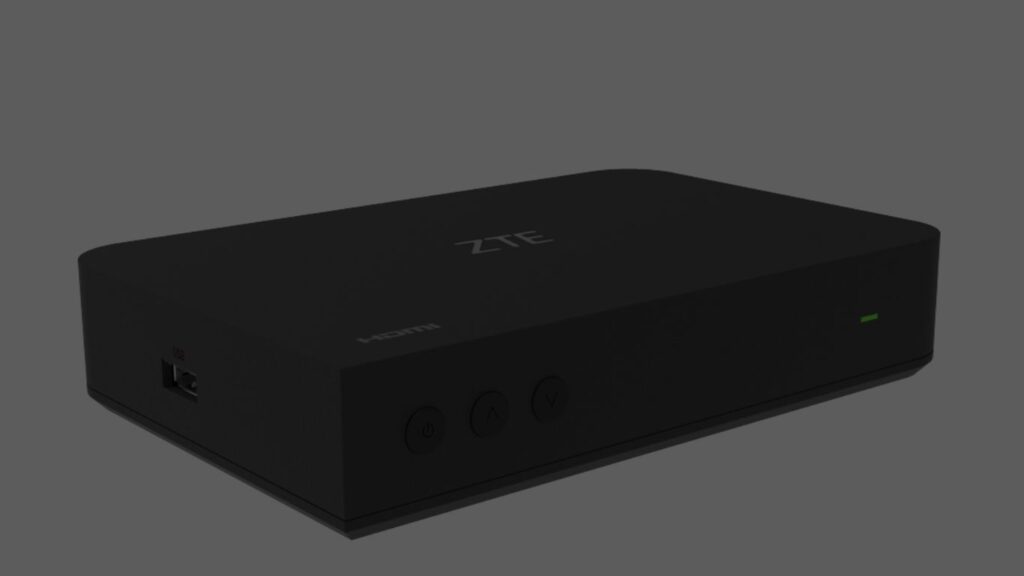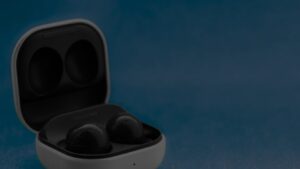As digital TV service providers look to improve service quality and streamline user experience, ZTE set top box (STB) models continue to gain traction for their performance and reliability. Among the available units, the ZXV10 B710S2-A38 and ZXV10 B710C-A14 offer different technical strengths designed for satellite and cable operators, respectively.
In this review, we compare these two ZTE STB models side-by-side to see which one offers the stronger value for service providers and end-users.
Purpose and Signal Standard
The most immediate difference between the two units is their broadcast compatibility.
- The B710S2-A38 is a DVB-S/DVB-S2 satellite zapper set top box, ideal for satellite TV services.
- The B710C-A14, on the other hand, supports DVB-C, making it suitable for cable TV distribution.
This distinction already sets a clear use-case direction. Operators working within satellite infrastructures will find the B710S2-A38 better aligned with their delivery methods, while those managing cable networks will prefer the B710C-A14.
Video Codec Support and Viewing Experience
Both ZTE set top box models handle high-definition content, but their codec support differs slightly.
B710S2-A38 supports:
- MPEG-2
- H.264 (MPEG-4 Part 10)
- HEVC (Main 10 profile)
B710C-A14 supports:
- MPEG-2
- MPEG-4
- H.264
- H.265 (HEVC)
Although both units cover a broad range of compression formats, the B710C-A14 includes H.265 explicitly in its supported formats. H.265 offers better compression efficiency, which is beneficial for delivering HD content with reduced bandwidth. On paper, the codec support for both is close, but the presence of H.265 in the B710C-A14 could be an advantage in cable networks where bandwidth optimization plays a bigger role.
Audio Output and Media Capabilities
Audio capability is usually overlooked, but remains significant for households using home theater setups or HDMI audio pass-through.
The B710C-A14 supports Dolby pass-through, which makes it better suited for consumers expecting surround sound output through home entertainment systems. The B710S2-A38 lacks Dolby mention in its documentation, but does support media player functionality, which allows local playback from USB devices. This adds value for users interested in non-streamed or personal content playback.
If the focus is on live TV with surround sound support, the B710C-A14 has a small edge. For users who value USB playback of local files, the B710S2-A38 has that feature explicitly included.
HDMI and USB Connectivity

Both ZTE set top box models include standard HDMI 1.4a ports with HDCP support, which allows for secure transmission of high-definition content. They each also provide a USB 2.0 Type A port, which is useful for firmware upgrades or media playback.
However, the B710S2-A38 includes HDMI-CEC capability. This allows the user to control multiple HDMI-connected devices using a single remote control, a feature often appreciated in home setups. HDMI-CEC support is not indicated in the B710C-A14 documentation.
If HDMI-CEC is a priority, especially in multi-device environments, the B710S2-A38 becomes a more appealing option.
Form Factor & Design
Physical dimensions play a role in installation flexibility, especially for service providers working with limited space.
B710S2-A38:
- Size: 155 x 103 x 31.5 mm
- Weight: 180g
B710C-A14:
- Size: 100 x 100 x 25.8 mm
The B710C-A14 is more compact, which may be preferable for installations behind wall-mounted TVs or in compact cabinets. On the other hand, the B710S2-A38 is slightly larger but still lightweight, making both models portable and easy to mount or place.
If space-saving is a major factor, the B710C-A14 holds a small advantage with its square, lower-profile footprint.
Power Requirements and Efficiency
Both units rely on an AC-DC adapter and accept input voltages ranging from 100 to 240 VAC at 50/60 Hz. The output is 12V, although the B710S2-A38’s exact current draw is not specified, while the B710C-A14 is rated for 12V, 1A. This suggests a power consumption of up to 12 watts for the cable model, assuming maximum load.
With similar adapters and universal input support, power supply requirements won’t be an issue for either. But if exact efficiency data is needed, the B710C-A14 provides clearer specifications.
ZTE Set Top Box Security Features
Both models include Nagra advanced security CAS (NASC 3.0). This is essential for service providers seeking to manage content protection, enforce subscription controls, and minimize signal piracy.
In this regard, both models are on equal footing, giving providers the same conditional access capabilities regardless of distribution method.
Firmware Upgrades and Maintenance
Keeping set top boxes current with new firmware helps improve performance and fix bugs over time.
- The B710C-A14 supports OTA (Over-The-Air) firmware upgrades, simplifying the process for providers and end users.
- Firmware upgrade capability is not specifically listed in the B710S2-A38 documentation, although media player functionality could allow for manual upgrades via USB.
From a maintenance perspective, the OTA upgrade support in the B710C-A14 can help reduce customer support costs and improve long-term device performance without physical intervention.
Quick Summary
Here is a simplified match-up based on service type and operational priorities:
| Feature | B710S2-A38 | B710C-A14 |
| Signal Type | DVB-S/S2 (Satellite) | DVB-C (Cable) |
| Codec Support | MPEG-2, H.264, HEVC | MPEG-2, MPEG-4, H.264, H.265 |
| Dolby Audio | Not listed | Yes |
| HDMI-CEC | Yes | Not listed |
| Media Player | Yes | Not listed |
| Firmware Upgrade | Manual (assumed) | OTA |
| Dimensions | Larger | Compact |
| CAS Security | NASC 3.0 | NASC 3.0 |
Final Considerations
Choosing the better ZTE set top box depends largely on the distribution model and user priorities. For satellite operators, the B710S2-A38 stands out with its support for HEVC Main 10 video decoding, HDMI-CEC, and media playback flexibility. For cable operators, the B710C-A14 delivers a compact form factor, Dolby audio, and convenient OTA firmware updates, which makes it well-suited for straightforward deployments and scalable maintenance.
Both models meet modern expectations for HD video delivery and conditional access, but each caters to a slightly different operational focus. Selecting the more suitable one hinges on infrastructure type and the user experience service providers aim to deliver.






